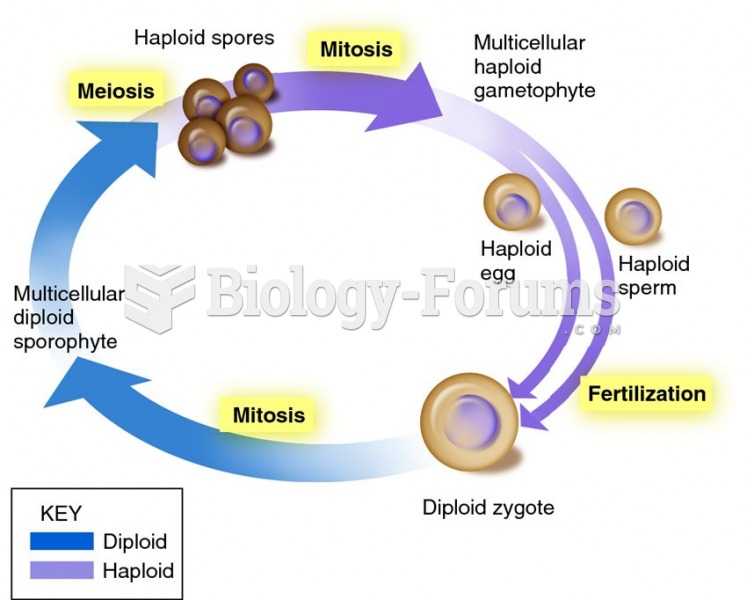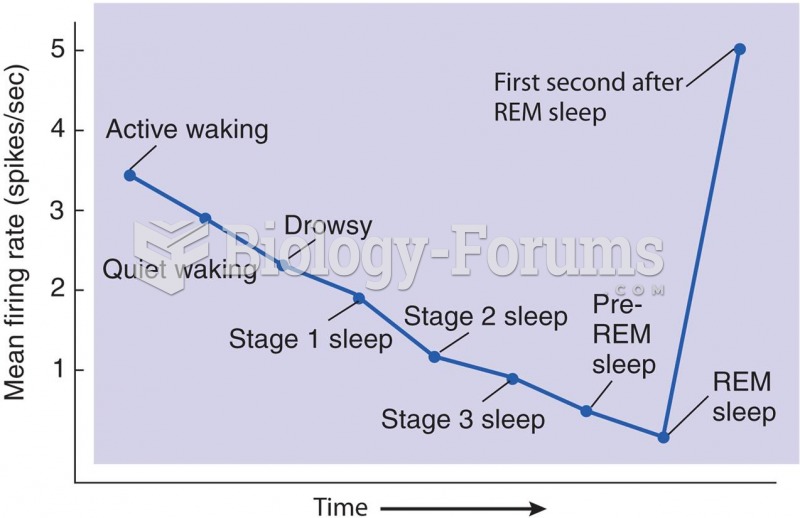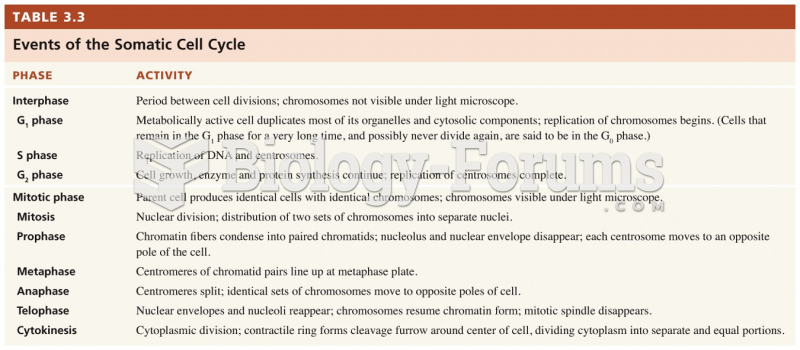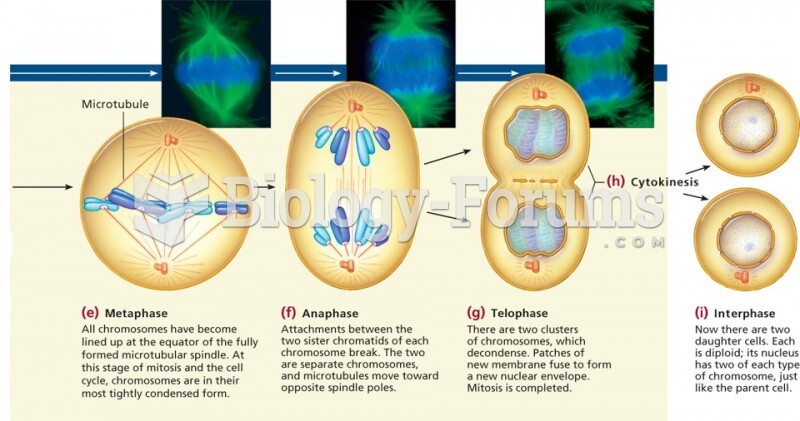This topic contains a solution. Click here to go to the answer
|
|
|
Did you know?
It is difficult to obtain enough calcium without consuming milk or other dairy foods.
Did you know?
By definition, when a medication is administered intravenously, its bioavailability is 100%.
Did you know?
The human body produces and destroys 15 million blood cells every second.
Did you know?
Hip fractures are the most serious consequences of osteoporosis. The incidence of hip fractures increases with each decade among patients in their 60s to patients in their 90s for both women and men of all populations. Men and women older than 80 years of age show the highest incidence of hip fractures.
Did you know?
Women are 50% to 75% more likely than men to experience an adverse drug reaction.







